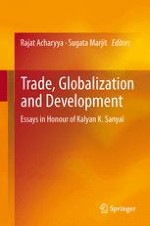2014 | OriginalPaper | Buchkapitel
10. Convergence in a Three-Factor Dynamic Model: Finite Versus Infinite Lives
verfasst von : Partha Sen
Erschienen in: Trade, Globalization and Development
Verlag: Springer India
Aktivieren Sie unsere intelligente Suche, um passende Fachinhalte oder Patente zu finden.
Wählen Sie Textabschnitte aus um mit Künstlicher Intelligenz passenden Patente zu finden. powered by
Markieren Sie Textabschnitte, um KI-gestützt weitere passende Inhalte zu finden. powered by
